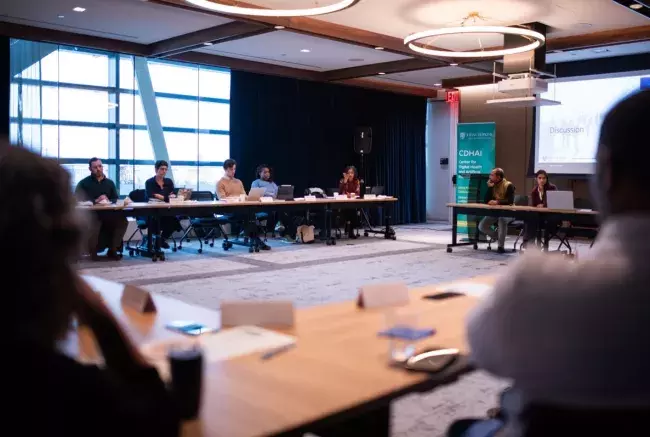According to new research from Professor Mario Macis, peer incentives for TB screenings could help alleviate one of the world’s deadliest scourges.

Improving TB screening in India: The right incentive
Tuberculosis, a highly contagious airborne respiratory disease, remains a deadly scourge in many parts of the world, and it hits vulnerable populations in Africa and Asia particularly hard, notes Mario Macis, professor of economics at the Johns Hopkins Carey Business School. “Globally, there are about 1.6 million deaths each year due to TB,” he says.
What makes these deaths particularly tragic is that most could be avoided.
“This is not some new disease where we don’t know what to do,” says Macis. “This is a very old disease, and we have a treatment and a cure: antibiotics taken over a course of months.”
One key stumbling block has been accurately identifying people who are infected with TB and getting them into treatment. In India alone, some 40 percent of TB cases are not reported to public health authorities, says Macis, who serves on the core faculty of the Hopkins Business of Health Initiative. To overcome this hurdle, he and two colleagues borrowed a strategy from labor economics: incentivized peer referrals. In research published recently in the American Economic Journal: Applied Economics, Macis, and Jessica Goldberg of the University of Maryland, and Pradeep Chintagunta of the University of Chicago conducted a study involving several thousand patients with TB at more than 100 treatment centers in India.
“We found that small financial incentives raise the probability that existing patients refer prospective patients for screening and testing, resulting in cost-effective identification of new cases,” the researchers write in their paper.
Speaking from experience
Macis notes that employee referral programs, which have been used for years, are well-studied and have been widely shown to be effective. The idea is that employees receive a bonus or reward if they successfully refer a friend or colleague who goes on to be hired by the company.
“As an employee, I know my company well, and [I know] the skills they are looking for,” Macis explains. “I can save my company time and money because I know where to find the right people. “And when it comes to getting promising hires to sign on, he says, “I may be more persuasive with my contacts than, for instance, someone from Human Resources because I am a trusted source who can speak from experience about what it’s like to work at my company.”
Macis and colleagues believed these concepts could translate well to the challenges inherent to TB screening, where large numbers of individuals must be screened to accurately identify individuals needing testing, which proves costly, and where people living in marginalized communities may not be aware of — or might underestimate — the benefits of treatment for the disease.
People who are already being treated for TB “may have connections to at-risk people who are hard for health workers to identify and reach in a timely manner,” Macis and his colleagues note in their paper. Moreover, those being treated can vouch for the quality and benefits of the treatment, sharing their own personal testimonies, which “could be more compelling to some prospective patients than information from health workers.”
Benefits of social networks
Indeed, incentives proved effective. Partnering with the non-governmental organization Operation ASHA, the researchers implemented a randomized controlled trial of financial incentives and peer outreach strategies involving 3,176 patients and 122 treatment centers.
Macis and colleagues found that using financial incentives with existing patients doubled the number of new suspected cases who came in for screening: on average, the report says, providing incentives resulted in one new patient screened for every 10 existing patients, compared to one new patient screened for every 22 existing patients in the absence of incentives.
Moreover, incentivized peer outreach was more successful in ultimately finding individuals with TB than outreach by health workers. Outreach by existing patients resulted in an average of one new symptomatic person tested for every 11 existing patients — “more than double the levels of case finding when outreach was conducted by health workers,” the researchers write, noting that peers benefit from having “private information about individuals in their social networks to target for outreach.” Nearly all of these patients initiated treatment immediately.
Calculating the cost
Given the effectiveness of small financial incentives and the cost of time, Macis and colleagues conclude that incentivized peer outreach in TB screening is much more cost effective than health worker outreach. In fact, new case screenings resulting from peer outreach would cost 80 percent less overall than those resulting from health worker outreach. Additionally, accurate new case identification would be between 62 and 72 percent less costly.
What to Read Next

business of health
AI for health equity: navigating the future of health care“It’s much less expensive to identify symptomatic individuals using peers because they turn out to be more persuasive,” Macis says. What’s more, incentivized peers reached the most marginalized individuals, because those individuals were less socially connected and therefore less likely for health workers to find.
Buoyed by these results, Macis is now in early stages or working with the United Nations Development Programme in Pakistan to apply the researchers’ findings to TB screening efforts in that country.
He recognizes that the global TB epidemic is a multi-faceted crisis and that his team’s findings will need further investigation with a larger scale study.
“We cannot say that peer incentives alone will solve the TB problem,” he says. “But we do believe that this offers one promising approach that can complement existing strategies to save lives.”


